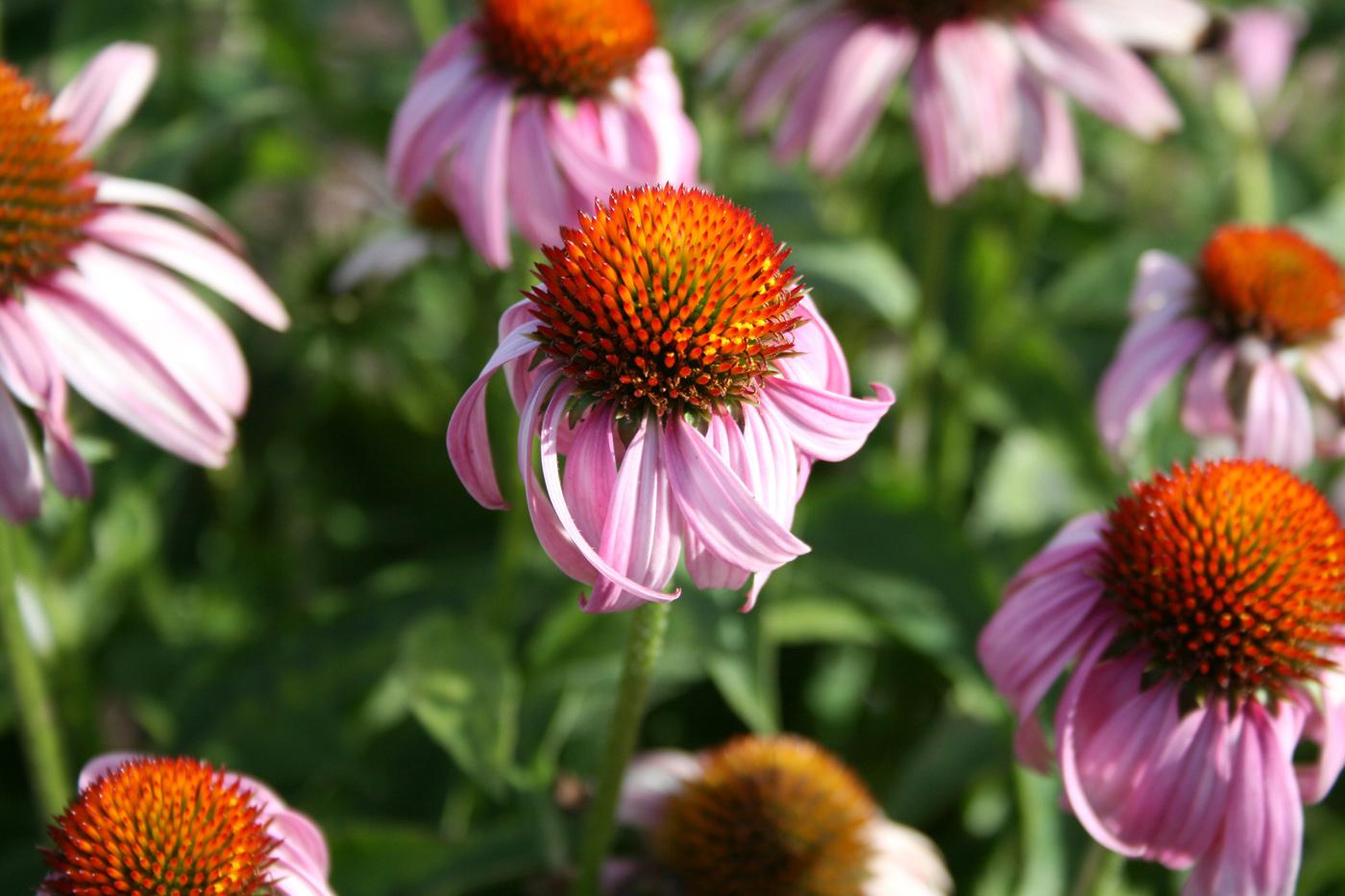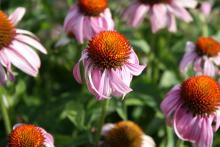Information Possibly Outdated
The information presented on this page was originally released on February 6, 2012. It may not be outdated, but please search our site for more current information. If you plan to quote or reference this information in a publication, please check with the Extension specialist or author before proceeding.
Purple coneflowers are an easy garden choice
Purple coneflowers are a flowering Mississippi native perennial that can really make a statement in your home garden and landscape.
The plant’s name comes from the beautiful purple flowers that seem to attract an endless number of butterflies and bees, especially all sorts of bumblebees. Traditionally, flower colors range from pastel purplish-pinks to deep, dark, vibrant burgundies.
Purple coneflowers are members of the genus Echinacea, which is derived from the Greek word for hedgehog. This seems like a fitting description of their seeds, as they are very spiny and prickly.
Purple coneflowers are relatively easy to grow in our Mississippi gardens. They require little maintenance and will actually thrive on neglect. The best place to plant them is in raised beds or bermed areas with good soil drainage.
Some of the best specimens I have ever seen have been planted in commercial potting media in large containers on patios. Purple coneflowers do not like wet feet and will quickly succumb to crown rot during our cold and moist winters.
Once established, these plants are some of our hardiest, able to withstand our hot and dry summer season. Feed sparingly in the spring using a balanced, slow-release fertilizer. Feed about two tablespoons per plant. If you prefer, you can use high-quality compost or other organic fertilizer instead of commercial fertilizer.
As the flowers begin to fade, be sure to deadhead them. This will help to encourage repeat blooming through the summer. They reseed themselves readily, so deadheading spent blooms will help prevent your flowerbed looking weedy with too many coneflowers next year. I have had this problem in the past, and you don’t want to have this problem.
You can leave the last blooms and subsequent seed heads of the season as food for some of the birds that stay here during winter.
It is easy to propagate purple coneflowers by sowing collected seed. The seed needs about 60 days of cool, moist stratification to germinate. Ideally, sow the seed in small plastic pots and place outside on the back porch around Jan. 1, though it’s not too late to do it this weekend.
Allow the seedlings to produce about three sets of leaves before transplanting them to the garden. Coneflowers will readily hybridize, so your seedlings may not look exactly like the plant from which they were collected.
You also can propagate purple coneflowers by division every three to four years in the spring. Make sure each division has both root and shoot tissue attached.
If you have grown tired of the original purple, you will be interested to know there are other colors available now. New selections have white, yellow and red petals. There are also double flower types and some I call pompoms.
For more information on purple coneflowers, view the publication “Purple coneflowers for the Mississippi gardener” from this website.








